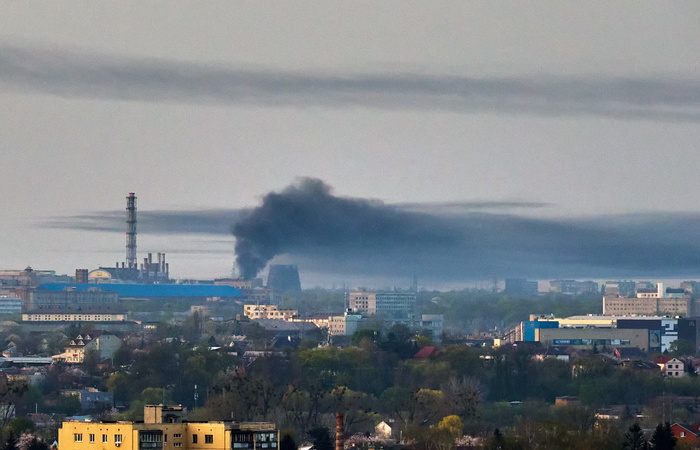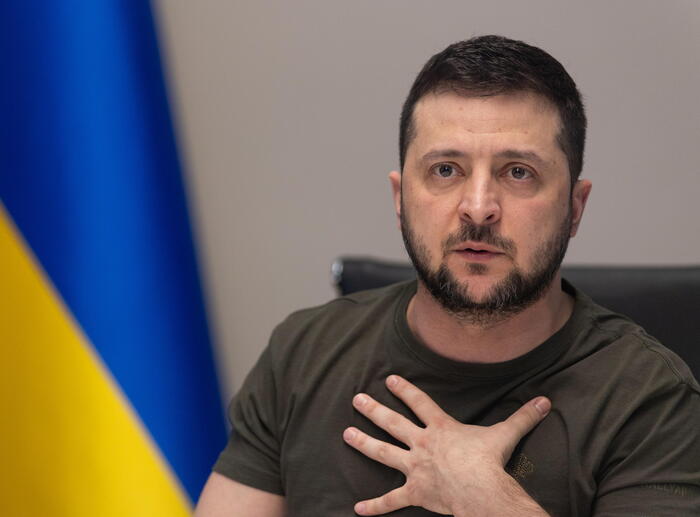A wave of drones has hit Moscow just hours after the latest massive attack that hit Kiev, the capital of Ukraine. The response on Tuesday to the Russian offensive, in the fifteenth month of the invasion of Ukraine, has focused on the capital of the Moskva River as the target of a coordinated action that, although it has only slightly damaged residential buildings, opens a new chapter in the war. Moscow has woken up at the beginning of the expected summer with the news that several drones – between 10 or 20, according to the sources of several Russian media; eight, according to the Ministry of Defense—had fallen on its territory. In total, two people have needed medical attention, although there have been no injuries, according to the mayor of the capital, Sergei Sobyanin. "According to the information of the medical services of the city, none of the neighbors of the houses damaged by the unmanned aerial devices were seriously injured," said the mayor in his profile on social networks.
At least two blocks of the southwestern tip of this gigantic city have been hit by drones. In the images disseminated on Russian networks of these attacks you can see broken windows and the top of one of these buildings burned. One of them, on Profsoyúznaya Street 98, inside the last ring of the metropolis, and the other on Atlasova Street in the New Moscow district, on the other side of the highway. "Residents have been evacuated for security measures," Sobyanin said. "Immediately after finishing their work the special services, residents will be able to return to their apartments," announced the mayor, who stressed that the two buildings have suffered "minor damage".
View of the damage caused by a drone in a building in Moscow on Tuesday. MAXIM SHEMETOV (REUTERS)
This is the first large-scale drone attack that the capital has experienced in the war. Moscow was already aware for the first time that it could be targeted by these devices on May 3, when two drones hit the roof of one of the Kremlin buildings, the Senate Palace, without causing significant damage. Russia then accused Ukraine of trying to assassinate Vladimir Putin, although the Russian president resides on the outskirts of the capital and rarely goes to the compound.
The Russian capital is located more than 800 kilometers away from the Ukrainian border. "Residents of some areas of the Moscow region were able to hear the sounds of explosions this morning - this is our air defense. Several drones were shot down as they approached Moscow," was the message with which the governor of the region, Andrei Vorobiov, tried to reassure the neighbors who witnessed the attack.
According to information from the Russian Ministry of Defense, eight drones took part in this new incursion on its territory. "They were all hit. Three of them were suppressed by electronic warfare system: they lost control and deviated from their targets. Five more were shot down by the Pantsir-S anti-aircraft missile and gun system in the Moscow region," it said in a statement.
Despite the incident, airports in the region are operating normally, according to Russia's air transport agency, Rosaviatsia. In a similar incident on February 28, the airspace of St. Petersburg, Leningrad region, was closed for a few hours due to the detection of an unidentified aircraft. That same day, the Moscow region reported the destruction of several drones over its territory.
Air defenses in Kiev
The offensive on Moscow has taken place a few hours after Kiev suffered, during the early hours of Tuesday, a new wave of drone bombs. A total of 20 Shahed drones were shot down over the Ukrainian capital, in the fourth consecutive night of explosions that left its citizens sleepless. It is the seventeenth bombing suffered by the city so far in May. Unlike the previous days, the latest attack has caused greater damage by the remains of missiles and drones that have fallen on residential areas: the death of a woman and 13 wounded have been lamented, in addition to fires in several blocks of flats.
Russian bombing of Kiev is being effectively nullified by anti-aircraft systems, especially by American Patriot batteries. 10% of the weapons fired at the city would be reaching their target, according to a calculation based on data provided by the military command in the region. The Ukrainian Air Force reiterates that the main objective of these attacks is to identify the location of its anti-aircraft batteries (although they are mobile and change position periodically) and above all, to decimate the arsenal of anti-aircraft missiles that protect the capital.
Ukraine is completely dependent on the foreign supply of missiles for the Patriot and German Iris-T systems, an armament that ranges in cost in each unit between half a million and 4 million dollars. Without this input from the United States and its European NATO partners, Ukrainian cities would be at the mercy of Russian air power. Pentagon documents leaked last April confirmed U.S. fears that Ukraine would run out of air defense resources, especially its S-300 batteries. This Soviet missile system is the most widely used in Ukraine, but its rockets cannot be produced domestically and, being models that are not in service in NATO countries, their assets are limited. The Pentagon predicted that ammunition stocks for the Ukrainian S-300s could run out in May.
U.S. intelligence warned that a shortage of anti-aircraft missiles would jeopardize Ukraine's impending counteroffensive, because Russian planes could strike more comfortably. So far, the network of mobile air defense batteries of both militaries has prevented the air war from having a crucial influence on the conflict. This situation is especially negative for Russia, which has air power destined for war ten times greater than the Ukrainian.
The fear of the Ukrainian authorities is that if the counteroffensive succeeds and they recover much of the territory lost since the beginning of the invasion, Russia will choose to bait cities far from the front, such as Kiev. This followed the Ukrainian offensives in the summer and autumn of 2022 that liberated Kharkiv province and the western part of Kherson province. Moscow reacted in October with a four-month campaign of massive bombing of Ukraine's energy grid, leaving millions without electricity or heat. If the air defenses of the capital, and other cities such as Kharkiv, Odessa or Dnipro are decimated, the waves of drones and missiles will reach their targets more easily.
Follow all the international information on Facebook and Twitter, or in our weekly newsletter.
75% discount
Subscribe to continue reading
Read without limits
Read more
I'm already a subscriber






/cloudfront-eu-central-1.images.arcpublishing.com/prisa/LUEKJXRUALROT3APFHMVZZCGGI.jpg)

